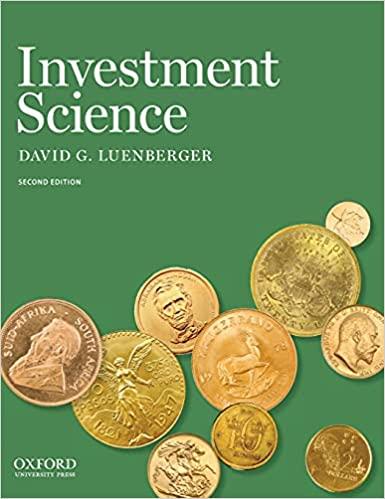The Dow Jones Industrial Average is an average of the prices of 30 industrial stocks with equal
Question:
The Dow Jones Industrial Average is an average of the prices of 30 industrial stocks with equal weights applied to all 30 stocks (but the sum of the weights is greater than 1). Occasionally (about twice per year) one of the 30 stocks splits (usually because its price has reached levels near \(\$ 100\) per share). When this happens, all weights are adjusted upward by adding an amount \(\epsilon\) to each of them, where \(\epsilon\) is chosen so that the computed Dow Jones Average is continuous.
Gavin Jones' father, Mr. D. Jones, uses the following investment strategy over a 10 -year period. At the beginning of the 10 years, Mr. Jones buys one share of each of the 30 stocks in the Dow Jones average. He puts the stock certificates in a drawer and does no more trading. If dividends arrive, he spends them. If additional certificates arrive due to stock splits, he tosses them in the drawer along with the others. At the end of 10 years he cashes in all certificates. He then compares his overall return, based on the ratio of the final value to the original cost, with the hypothetical return defined as the ratio of the Dow Jones Average now to 10 years ago. He is surprised to see that there is a difference. Which return do you think will be larger? And why? (Ignore transactions costs, and assume that all 30 stocks remain in the average over the 10 -year period.) [The difference, when actually measured, is close to \(1 \%\) per year.]
Step by Step Answer:






